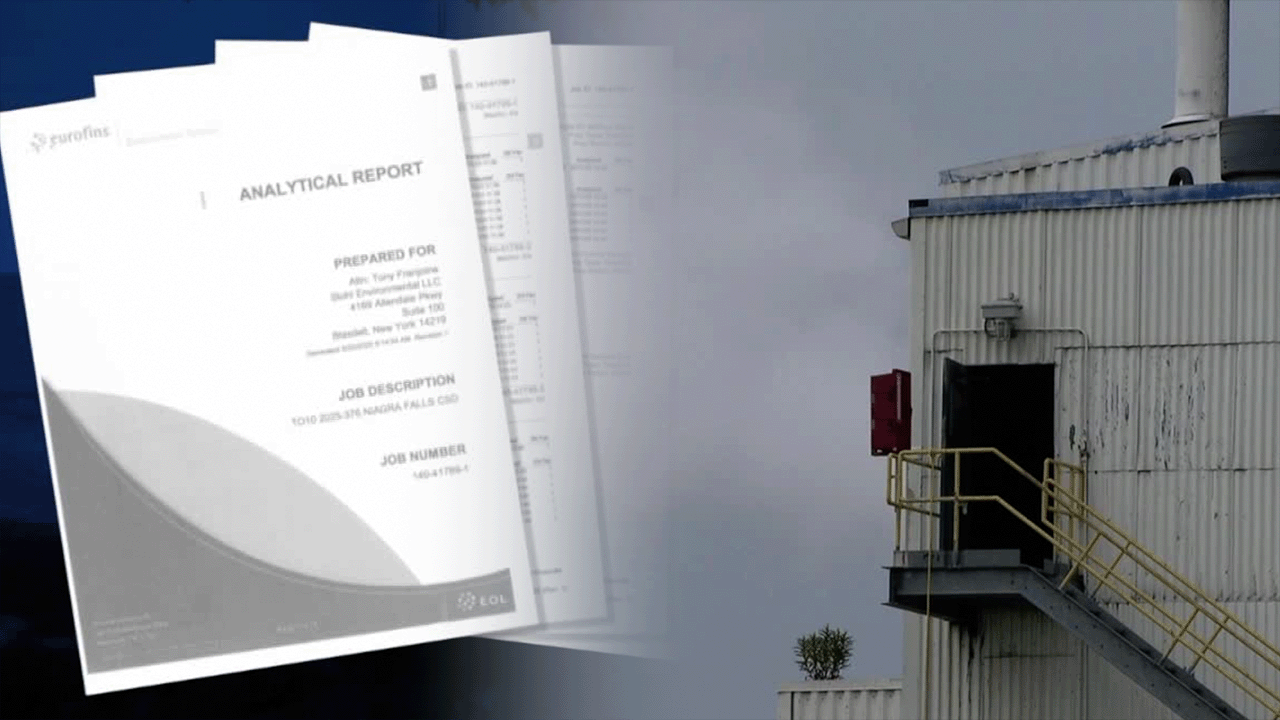NIAGARA FALLS, N.Y. (WKBW) — A cancer-causing chemical was not detected in the air over Cataract Elementary School in Niagara Falls, according to air testing conducted in April. However, an expert is raising concerns about potential flaws in the study's methodology.
Niagara Falls School Superintendent Mark Laurrie commissioned the study, testing for ortho-toluidine, after a 7 News I-Team investigation revealed the nearby Goodyear plant was emitting this chemical, with a plume potentially hovering over the school.
"This gave us some interim relief, interim relief," Laurrie said.
Drantch: Should this be enough to put students, families, staffers at ease?
Laurrie: Yeah, I'm comfortable. I'm comfortable with it.
However, Steven Wodka, who commissioned the plume study as an independent researcher and retired attorney, strongly disagrees with this conclusion.
"I'm sorry, Dr. Laurrie, you cannot reach that conclusion from that study," Wodka said.
WATCH: 'Waste of money': Expert questions air study that found no cancer-causing chemical near Niagara Falls school
Wodka claims there are major flaws in the district's study conducted by Stohl Environmental, an Orchard Park company.
"They should have known that the prediction for the wind that day was coming from the wrong direction, and they should have known that they needed to be able to test the result at between .02 to .10 micrograms per cubic meter," Wodka said.
Wodka said Stohl tested at 4.1.
According to Wodka, the study was looking for much higher levels of the chemical than what was projected in his mapping. He compared it to going to the grocery store looking to buy a single blueberry but coming back with a grapefruit.
Wodka also expressed concern about exposure risks for children at the school.
"Anything that's a plume is coming down onto the ground," Wodka said. "They're picking it up and it's being absorbed by their skin. So it's not just inhalation and that's just the reality."
Laurrie acknowledged that more comprehensive testing might be necessary.
"To really make me feel that it was completely, completely rectified, is that if we had this running for three or four months and then got the same result," Laurrie said.
Drantch: Is that something you're looking into?
Laurrie: It's something we have to consider.
Drantch: What would be the ultimate fix for you?
Laurrie: That what the standards are today, irrespective of the grandfathering are taken and put right in place.
The superintendent plans to commission a longer study in the coming months. He said he will continue testing until there is complete assurance. However, Wodka contends that real-time studies, at the necessary detection level, are nearly impossible, which is why he says computer modeling is typically relied upon.
The 7 News I-Team reached out to Stohl Environmental multiple times but has not received a response.
This story was reported on-air by a journalist and has been converted to this platform with the assistance of AI. Our editorial team verifies all reporting on all platforms for fairness and accuracy.





